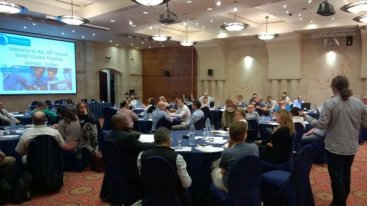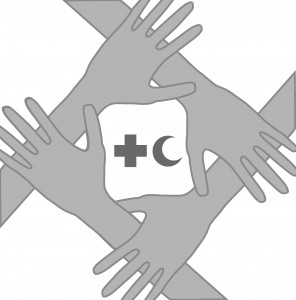Executive Summary
With the mounting numbers of refugees and Internally Displaced People (IDPs) worldwide, the number of humanitarian actors, too, have significantly increased over the past years. In IDP-only humanitarian crises, the mandates of the involved actors strongly overlap which calls for an increased level of coordination to avoid gaps, overlaps or duplications of efforts. In a reform process, the so-called Cluster Approach was developed to deliver non-refugee aid in a more effective and harmonised way and to achieve a needs-based, rather than capacity-driven, collective response. As one of 11 sectoral clusters, the global Water, Sanitation and Hygiene (WASH) Cluster was formed to coordinate humanitarian response in the WASH sector (WASH CLUSTER 2013). Refugee coordination, on the other hand, falls exclusively under UNHCR’s mandate for protection and assistance of refugees and does therefore not require sectoral coordination. It is entirely governed by UNHCRs Refugee Coordination Model, regardless of the status of the refugee crisis, including mixed refugee and IPD situations. The following factsheet provides information on the Cluster Approach and UNHCR's Refugee Coordination Model, detailing underlying strategies and responsibilities.
Introduction
The basis of the current international humanitarian coordination system was set by the UN General Assembly Resolution 46/182 in December 1991. Later, in 2005 the Humanitarian Reform Agenda introduced a number of new components to enhance predictability, accountability and partnership in humanitarian response. The reform comprised the development of the Inter-Agency Standing Committee (IASC) Cluster Approach, which structures country-level non-refugee humanitarian response along the main sectors of humanitarian action (such as shelter, food security, education etc.). The clusters, designated by the IASC, are composed of different UN and non-UN humanitarian organisations with clear responsibilities for coordination (UNHCR 2015a).

Cluster Approach and leading agencies for all sectors including WASH, Inter-Agency Standing Committee IASC. Source: UNHCR (2015a)
The goal of the Cluster Approach is to spread accountability for service delivery across different agencies rather than placing it on one single agency (UNHCR 2015a). Additionally, the approach aims to improve transparency, predictability, engagement with national and local authorities, inclusion of affected communities, advocacy and joint strategic and operational planning (UNHCR 2015a). Once applied effectively, the cluster approach enriches the coordination in emergency response and eventually links working partners in the same sector and even in the different sectors, expand partnerships for non-emergency programme cooperation.
At country level, the clusters are responsible for 1) providing a coordination platform, 2) coordinating needs assessments, gap analysis and prioritisation, 3) planning and developing strategies, 4) advocacy, 5) monitoring and reporting and 6) contingency planning, preparedness and capacity building (UNHCR 2015a).
The clusters are activated by the UN Emergency Relief Coordinator for the response to conflict- or disaster-related humanitarian crises (UNHCR 2015a). The approach was first applied following the 2005 earthquake in Pakistan, where nine thematic clusters were established within 24 hours of the earthquake.
The Global WASH Cluster
As one of 11 clusters, the Global Water, Sanitation and Hygiene (WASH) Cluster (GWC) aims to ensure that the delivery of WASH assistance is effectively coordinated on the national and global level (UNICEF 2013, WASH CLUSTER 2013). The priorities to improve the effectiveness of the WASH response is set out by the five pillars of the Global WASH Cluster Strategic Plan (GWCSP) (UNICEF 2013):
1. Effective coordination of the Global WASH Cluster.
2. Appropriate operational support to national WASH coordination boards.
3. Enhanced emergency preparedness of WASH participants.
4. Liability and learning to enable WASH cluster actions.
5. Active promotion for WASH as an essential part of the humanitarian response in both emergency and development settings.
UNICEF acts as global lead agency for the WASH sector due to its global operations, partners, resource and knowledge networks. The role of UNICEF is to build up response through a partnership and to support the national WASH coordination platforms through Field Support Teams of the GWC to achieve the core functions of supporting service delivery, emergency planning, preparedness and capacity building (UNHCR 2015a). At the global level, UNICEF hosts the WASH Cluster support team based in New York and Geneva (WASH CLUSTER 2013).

From the 20th Global WASH Cluster Meeting in Amman, Jordan. Source: WASH Cluster (2014).
Refugee Coordination Model
The Cluster Approach is used in large, complex, humanitarian crises, where large-scale and complex needs justify a multi-sectoral response that exceeds the mandate of a single agency. Since coordination of international protection and assistance for refugees fully lie under the mandate of UNHCRs, the clusters are only activated for response to IDP or mixed IDP and refugee crises, but not for refugee-only crises (UNHCR 2015a).
In order to provide a framework for leading, coordinating and delivering refugee operations, UNHCR's Refugee Coordination Model (RCM) was issued in December 2013. By articulating and consolidating coordination practices, the RCM aims to achieve the best possible protection of and assistance to refugees through collective efforts and capacities of the involved agencies (UNHCR n.Y; UNHCR 2015b). The RCM provides a statement of both a joined humanitarian mandate and distinct responsibilities. It clarifies roles and responsibilities, offers a platform for planning and coordinating operations and explains coordination modalities. Thereby, the model makes UNHCR's approach to coordination more predictable, inclusive and partner-friendly (UNHCR 2015b). It is applicable in all refugee situations, including new and protracted emergencies, located in camps, rural and urban settings as well mixed situations (UNHCR 2015b).
Mixed Situations
In the spectrum between the clearly distinguished refugee and non-refugee crises exist a number of mixed refugee and IDP situations. For such situations, the “OCHA-UNHCR Joint Note on Mixed Situations: Coordination in Practice” sets out the roles and responsibilities, leadership and coordination functions (UNHCR 2015b). Although it does not transfer any accountability or responsibility between the concerned stakeholders (UNHCR remains in its advocacy, supervisory, oversight and monitoring role over refugee service delivery), it aims to promote greater operational efficiency by seeking flexible and pragmatic arrangements. It develops integrated and strategic visions while at the same time maintaining interoperable plans and tools, accountabilities and responsibilities (UNHCR 2015b).
Where IDPs and refugees occur in the same locations, clusters or sectors capacities are used, based on a set of factors:
- operational context
- location of responses (geographically together, or separate)
- size of refugee and IDP populations
- capacity of UNHCR sectors / IDP clusters to deliver services according to the specific needs of both population groups
UNHCR and the Emergency Relief Coordinator (UNHCR and OCHA) together decide on the use of sector and clusters capacities for the response in mixed situations (UNHCR 2015b).
The overall goals of all coordination models are to smoothen the delivery of protection and services at the community level and to ensure that the rights and dignity of the affected populations are protected.
Cluster Approach (IASC)
Refugee Coordination Model (RCM)
Leadership, Inclusive Coordination and Effective Deliver
Emergency Coordination and the WASH Cluster Initiative
The Global Water Sanitation and Hygiene Cluster, or Global WASH Cluster (GWC)
From the 20th Global WASH Cluster Meeting in Amman, Jordan
Water, Sanitation and Hygiene (WASH) Cluster Coordination Handbook. A practical guide for all those involved in the Water, Sanitation, and Hygiene Cluster
This Handbook has been produced under the WASH Cluster Coordination project to support the effective coordination of a WASH Cluster response in emergency settings. This is the first trial edition of the Water, Sanitation, and Hygiene (WASH) Cluster Coordination Handbook to be field tested.
PRICE, G. (2009): Water, Sanitation and Hygiene (WASH) Cluster Coordination Handbook. A practical guide for all those involved in the Water, Sanitation, and Hygiene Cluster. (= First trial edition ). New York: UNICEF URL [Accessed: 27.09.2016]washcluster.net/about-us/
This is the official website of WASH Cluster. It provides information on the Global WASH Cluster, where they work, leading agency, strategy and activities, in addition, contacts for the GWC.
washcluster.net/national-clusters
This website provides a visualisation to explore and find focal points as well as local websites for various country groups/clusters, in addition to more detailed information on current major crises and information on WASH Cluster countries with formally activated / informal cluster systems and sectors.
https://emergency.unhcr.org
The UNHCR Emergency Handbook is the 4th edition of UNHCR’s Handbook for Emergencies, first published in 1982. This digital edition is primarily a tool for UNHCR emergency operations and its workforce. It contains entries structured along seven main topic areas: Getting ready, Protecting and empowering, Delivering the response, Leading and coordinating, Staff well-being, Security and Media.


